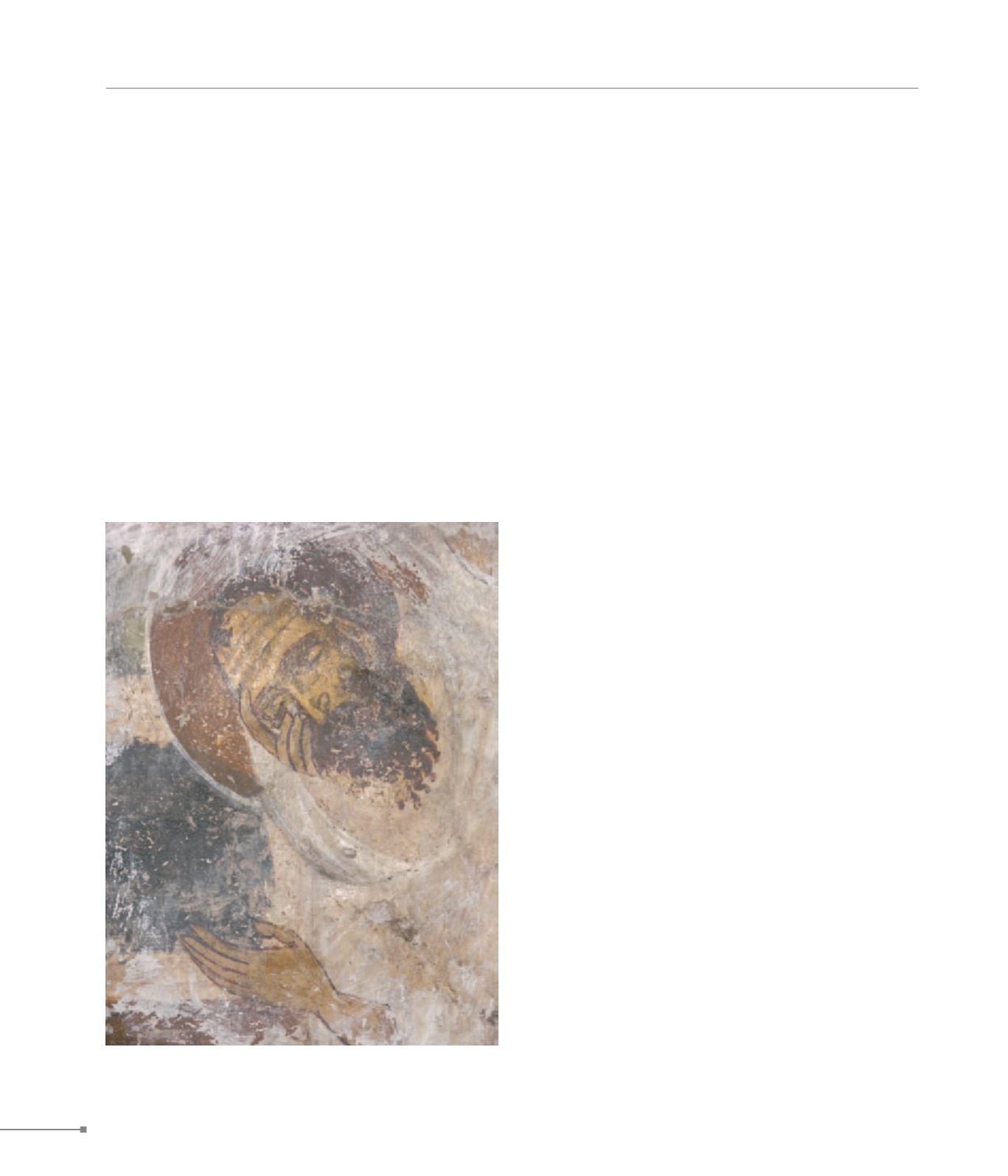
Kasteliana.
Viannos.
CRETE
278
469. Aghios Vasileios, church of Aghios Vasileios, wall painting (Άγιος
Βασίλειος, ομώνυμος ναός, τοιχογραφία)
466.
Kasteliana.
On Kastelos hill, NW of Ano Kasteliana, are the ruins of the
Castel Belvedere fortress. During Venetian rule it was the seat
of the Castellany of Belvedere. It is also known as Rizou or
Rizokastro. The hill had been inhabited from Late Minoan
times and continued to prosper until the Early Christian pe-
riod, to which belong the remnants of a basilica with a mosaic
floor. A stone-paved road leads from the plain to the fortress,
within which is a barrel-vaulted, single-nave church of Panagia
with wall-paintings of the 14th c. Interior space is found on
three levels, where there are numerous remains of houses,
cisterns and other structures. It seems that only the vulnerable
locations on the hill had been fortified. The fortress was built
by the Venetians in the 13th c., at the site of an older one, pos-
sibly Mid-Byzantine. It controls the fertile area of E Mesara and
the passage to the Libyan Sea through Viannos Gorge.
467.
Chondros.
Aghios Theodoros is a barrel-vaulted, single-nave church with
wall-paintings of Palaeologan style but provincial. Early Chris-
tian graves have also been discovered.
468.
Keraton.
This fortress stands on steep Vigla hill (which resembles a
horn), N of Keratokampos in the area of Viannos. It has visual
contact over an extensive plain along the S coast of Crete,
where the Arab navy landed. It was probably built in the sec-
ond Byzantine period (961-1204), so that the only suitable
place for landing in Mesara would be under control, which
was part of a wider defence plan after the liberation of Crete.
Within the enclosure are found buildings and large cisterns,
indicating that the fortress could resist a long siege and host
a large number of people. On the N side of the hill structural
ruins and large quantities of pottery from antiquity and the
Byzantine years are discernible. The fortress controls the road
to the coast from inland. In the coastal area there were two an-
cient cities at the current sites of Tsoutsouro and Arvi, where
Early Christian basilicas have been discovered and partially
excavated.
469. Aghios Vasileios.
The single-nave church of Aghios Vasileios is found at the
village of the same name. The church includes Venetian el-
ements, though these have been degraded due to modern
interventions.
470.
Viannos.
The naiskos of Saint George has a pointed, Gothic-style barrel
vault. The iconographical programme of the evangelical cycle
and the life of the saint include some of the most rare pictures
in Crete: the Tree of Jesse, the hymn “Anothen oi Prophetai”
(the Prophets Above), the Exaltation of the Holy Cross, Saint
Christopher carrying the Christ Child, etc. According to the
founder’s inscription, it is the work of the painter Ioannis Mou-
souros, dated 1401. The provincial style still appears in the
local artistic tradition of the late 14th c., bypassing the influ-
ences of the innovative Constantinopolitan art introduced to
Crete by immigrant painters. In the church of Aghia Pelagia


